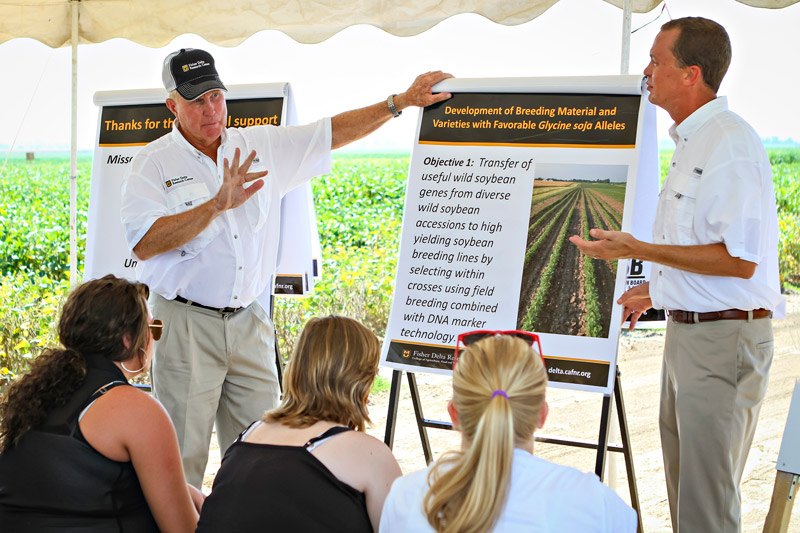A family farm in rural Mississippi is where Grover Shannon’s devotion to agriculture started. This dedication to the industry is what guided him through a storied 49-year career in soybean breeding where his goal was to be a “friend of the farmer”.
Grover’s path growing up always led him back to the farm, however, when his parents sold the farm during his junior year at Mississippi State University (MSU), his path had to change. Though, one thing stayed consistent – his love for agriculture. With a future on-farm out of sight, Grover shifted his vision from production to research and with help from many mentors at MSU he decided to pursue a master’s degree in crop physiology and eventually a doctorate in plant genetics and breeding, both at Purdue University.
After graduating from Purdue, Grover conducted research on wheat and barley at the University of Maryland. However, his heart was always with soybeans – which he never stayed away from for too long. Throughout the years he conducted soybean research across the public and private sectors for a variety of companies including companies like Asgrow and Delta and Pineland.
Eventually, his career led him to the University of Missouri at the Fisher Delta Research, Extension and Education Center to continue his passion – soybean breeding. Including, research pertaining to the high oleic, low linolenic trait to improve soybean oil.

“When I went to Missouri, several researchers were working on high oleic. The United Soybean Board (USB) had funded a lot of the work, but we weren’t getting anywhere. It was a complicated inheritance and wasn’t very stable,” said Grover. “I got the idea to look at germplasm to find the lines that were a little bit higher in oleic and maybe we could cross them and build the genes ourselves.”
This new perspective for soybean breeding is what led to the high-oleic, low-linolenic trait now known as SOYLEIC and created an ever-expanding market for non-GM high-oleic soybean oil.
“We had several breeding lines we crossed and found out it was two recessive genes necessary to increase the oleic acid percentage – from 20% to 80% – and now many are working with the SOYLEIC trait,” said Grover.
With 17 state research programs and nearly 100,000 acres of SOYLEIC being planted, the work of Grover Shannon and other contributors to the SOYLEIC trait can be seen in fields across the nation, which is exactly why Grover has a passion for soybean breeding and applied agronomic research.
“One thing that I think helped me is that I didn’t compare my breeding lines to just anything. I compared it to what the farmers were growing,” says Grover. “I think that’s very important, that’s the key. Now, that’s the same thing we’re doing with the high oleic, the lines must be competitive with what the farmers grow on their farm.”
From field to farmer, Grover’s devotion to agriculture is evident through his tenured vocation, development of 180-plus soybean varieties and consistent dedication towards serving the farmer and their best interests.
< Vince Pantalone
Andrew Scaboo >
